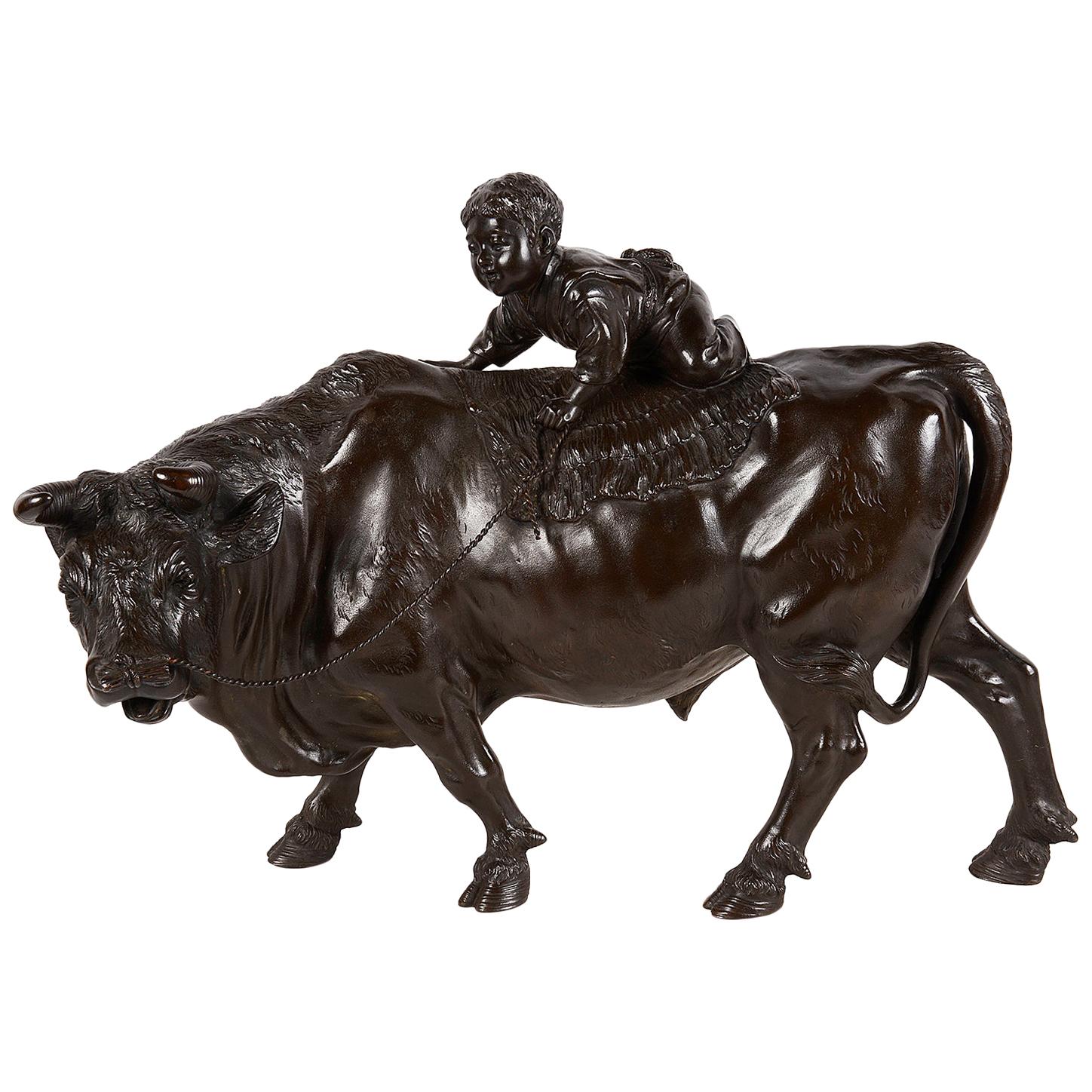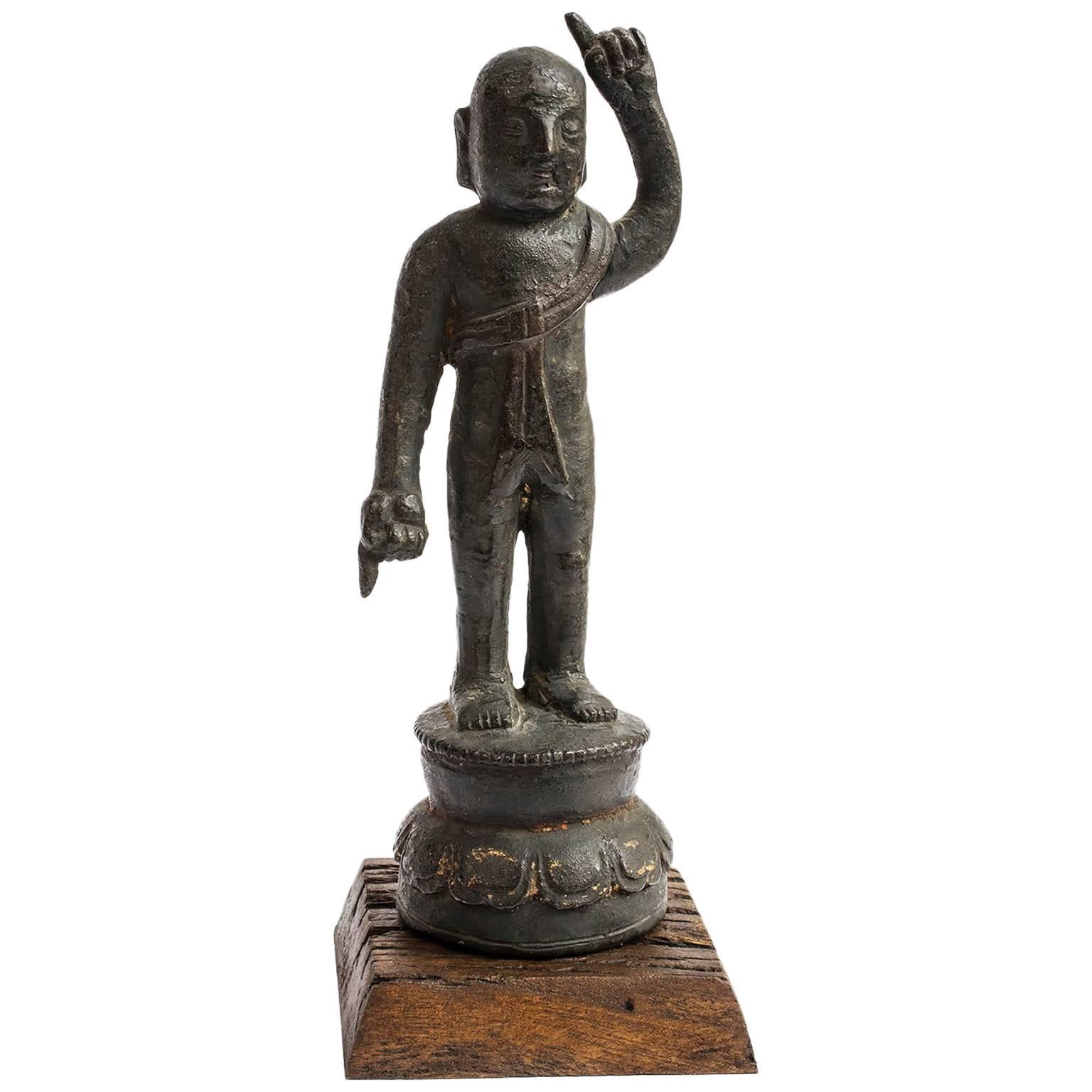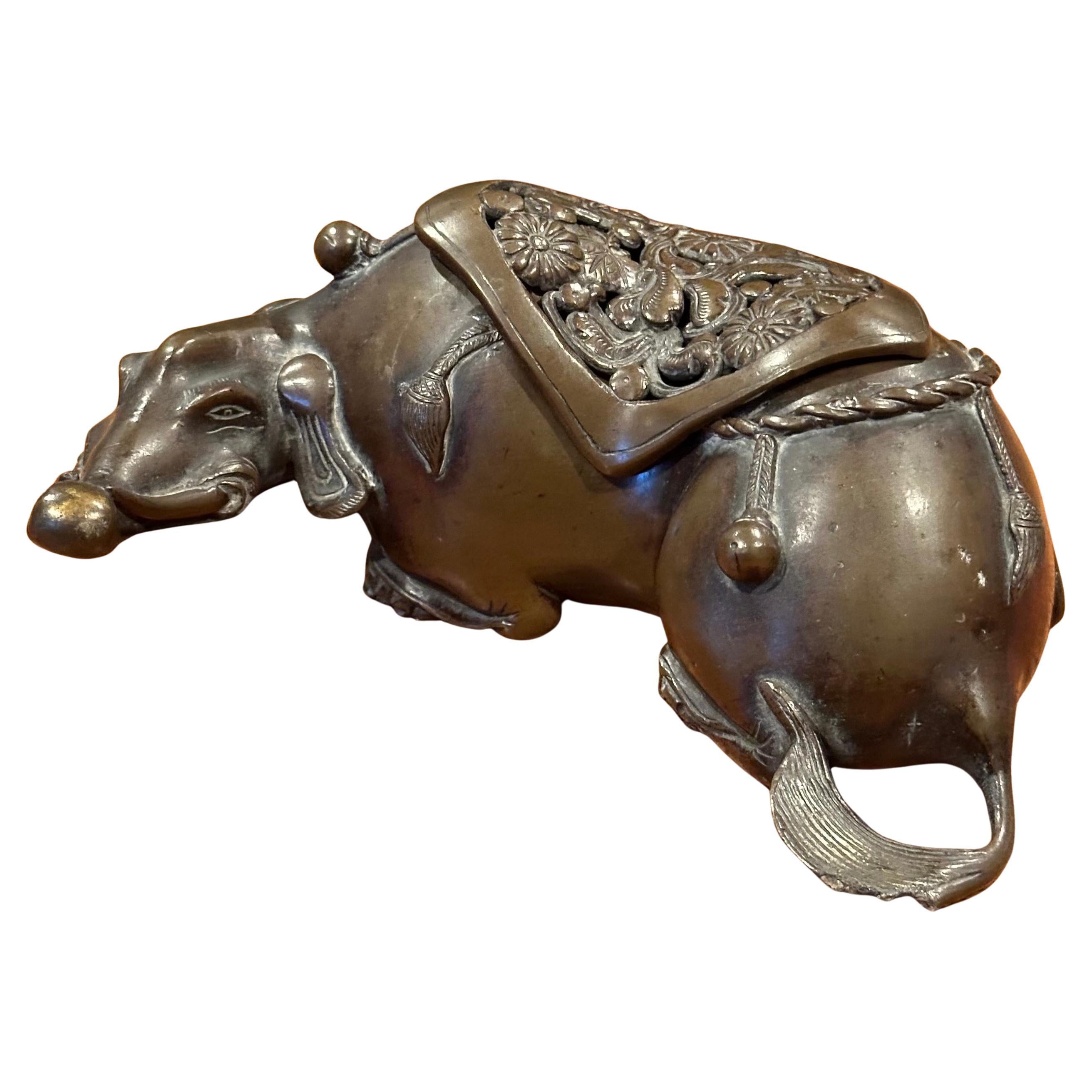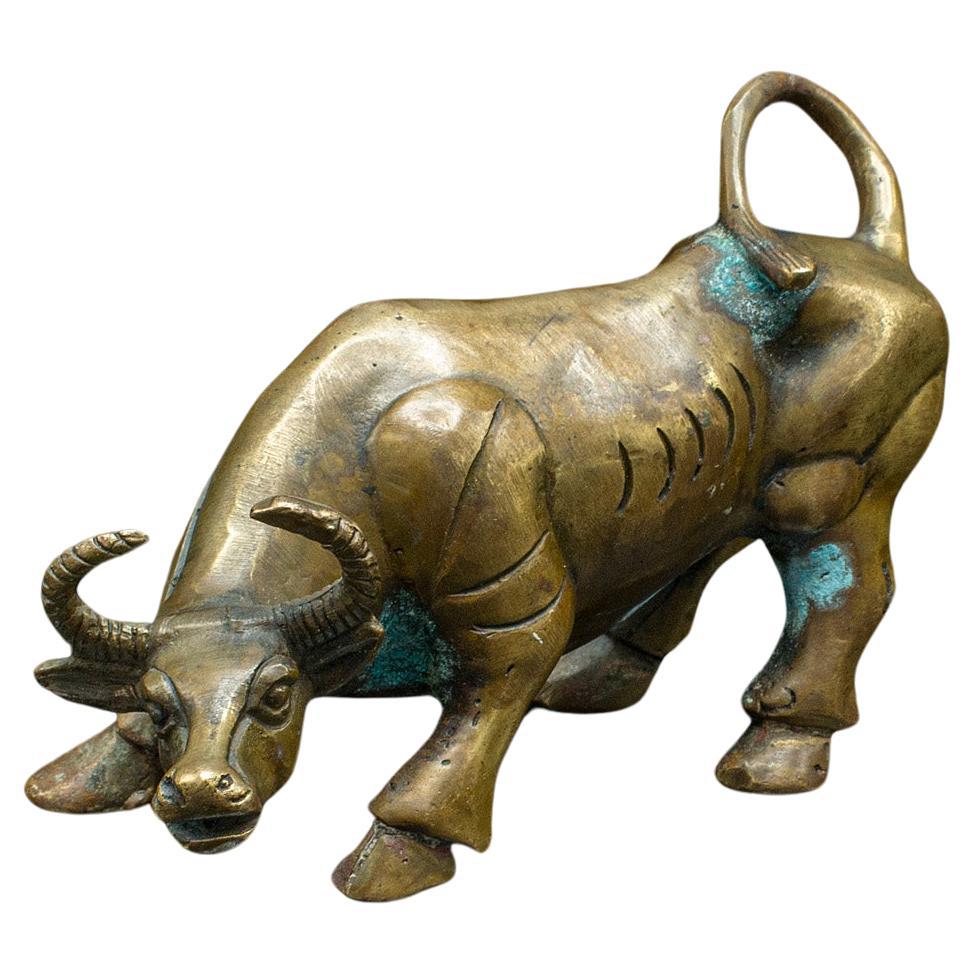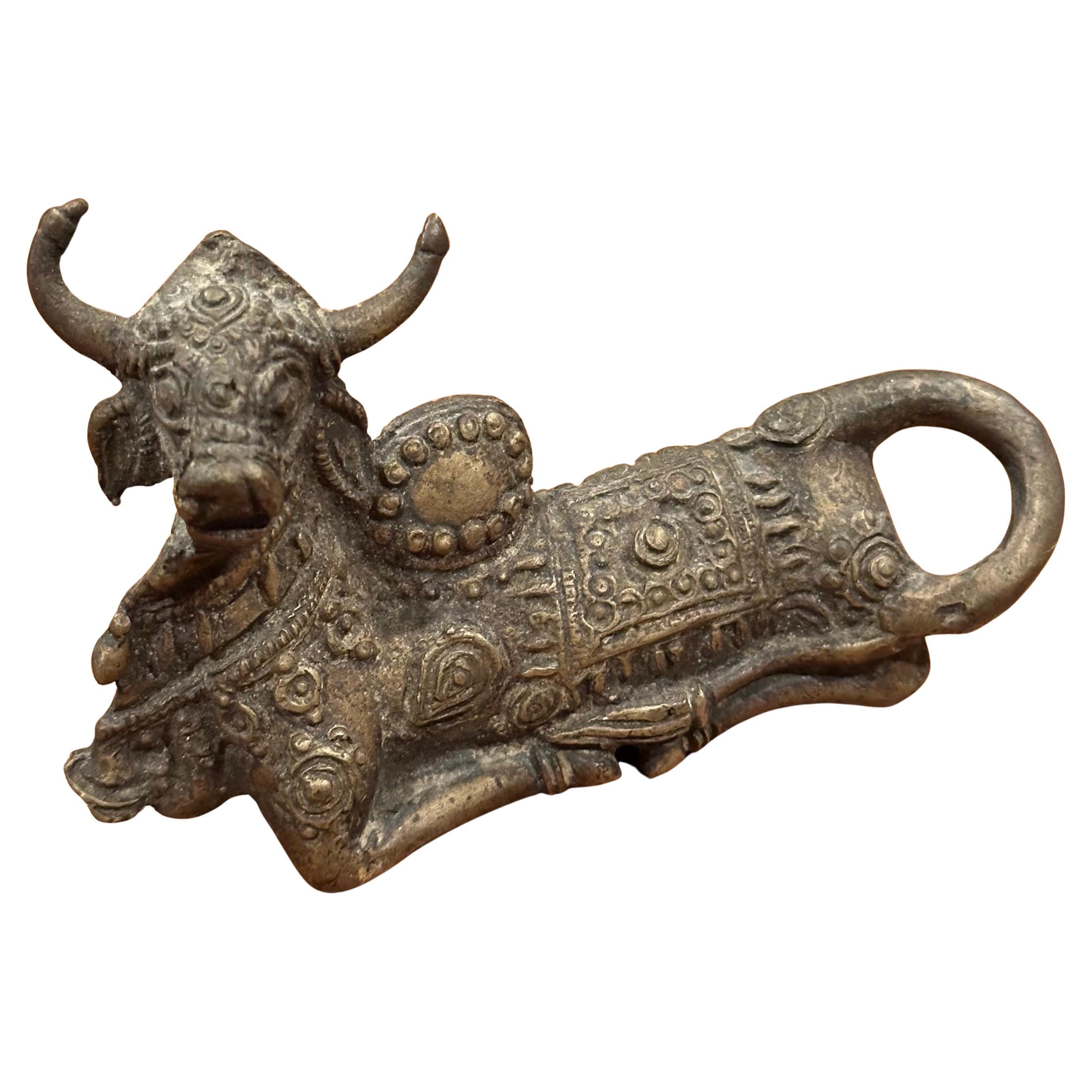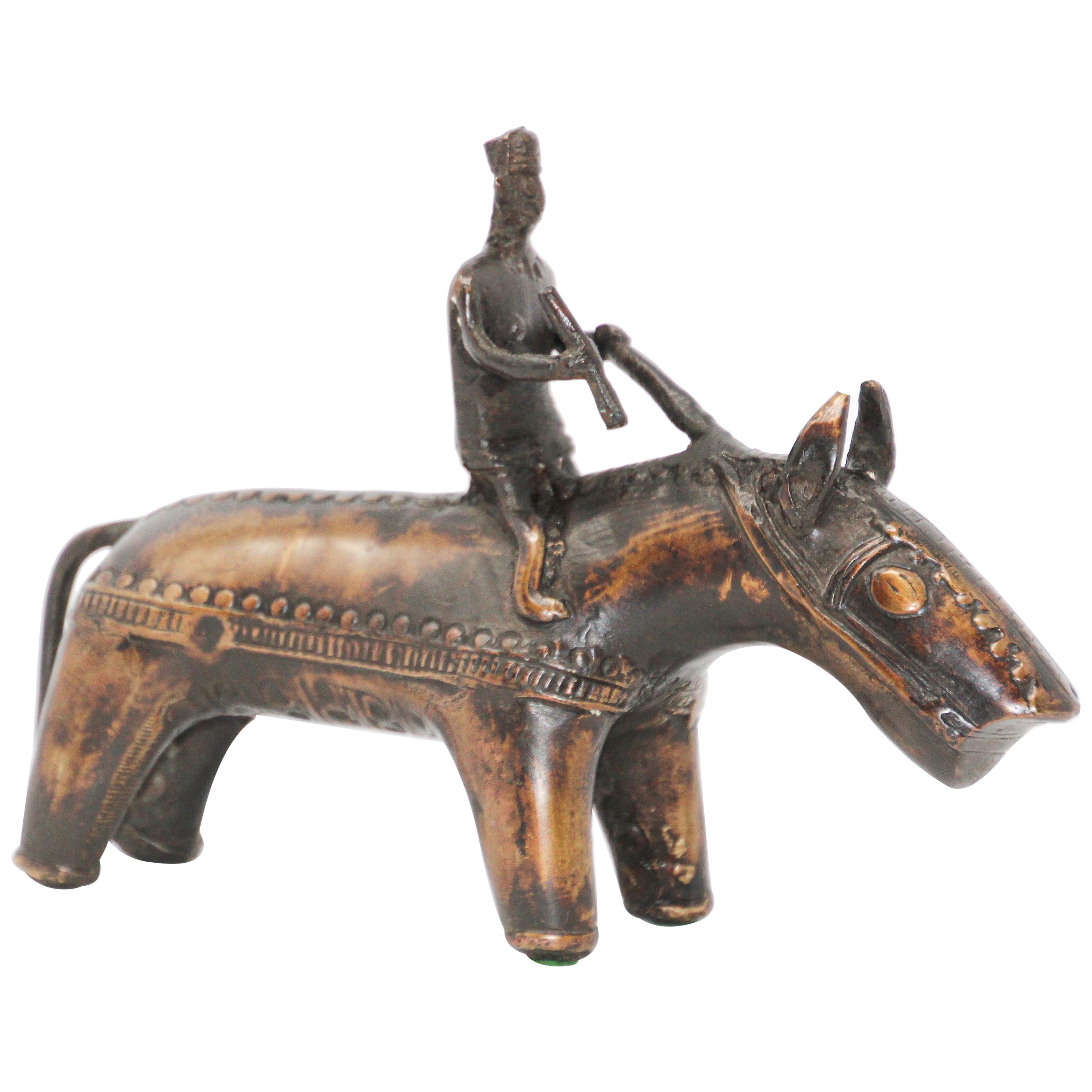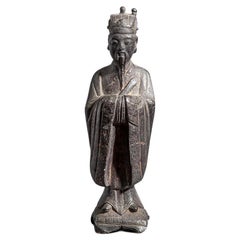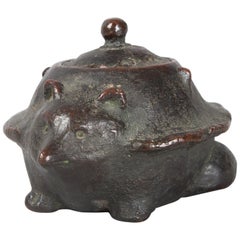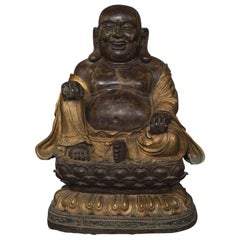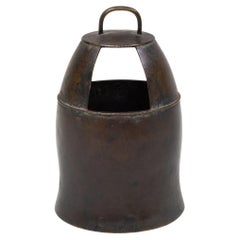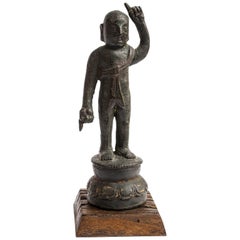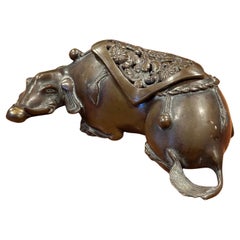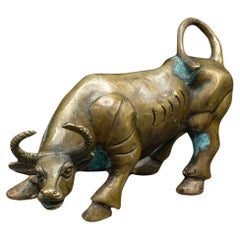Items Similar to 18th Century Bronze Censer of a Boy Riding a Bull
Want more images or videos?
Request additional images or videos from the seller
1 of 10
18th Century Bronze Censer of a Boy Riding a Bull
$3,000
£2,277.97
€2,605.03
CA$4,191.44
A$4,661.79
CHF 2,434.24
MX$56,729.03
NOK 31,088.99
SEK 29,155.99
DKK 19,442.34
Shipping
Retrieving quote...The 1stDibs Promise:
Authenticity Guarantee,
Money-Back Guarantee,
24-Hour Cancellation
About the Item
An incense burner in the shape of a boy playing a flute while riding a bull. The boy is the removable top to the incense receptacle located inside the bull's body.
- Dimensions:Height: 5.5 in (13.97 cm)Width: 5 in (12.7 cm)Depth: 2 in (5.08 cm)
- Materials and Techniques:
- Place of Origin:
- Period:
- Date of Manufacture:circa 1775
- Condition:Condition report upon request.
- Seller Location:Hudson, NY
- Reference Number:Seller: A02331stDibs: LU855129528712
About the Seller
5.0
Recognized Seller
These prestigious sellers are industry leaders and represent the highest echelon for item quality and design.
Established in 1971
1stDibs seller since 2008
166 sales on 1stDibs
Typical response time: 13 hours
Associations
The Art and Antique Dealers League of AmericaAntiques Associations Members
- ShippingRetrieving quote...Shipping from: Hudson, NY
- Return Policy
Authenticity Guarantee
In the unlikely event there’s an issue with an item’s authenticity, contact us within 1 year for a full refund. DetailsMoney-Back Guarantee
If your item is not as described, is damaged in transit, or does not arrive, contact us within 7 days for a full refund. Details24-Hour Cancellation
You have a 24-hour grace period in which to reconsider your purchase, with no questions asked.Vetted Professional Sellers
Our world-class sellers must adhere to strict standards for service and quality, maintaining the integrity of our listings.Price-Match Guarantee
If you find that a seller listed the same item for a lower price elsewhere, we’ll match it.Trusted Global Delivery
Our best-in-class carrier network provides specialized shipping options worldwide, including custom delivery.More From This Seller
View All16th Century Chinese Standing Bronze Figure of a Nobleman
Located in Hudson, NY
Hongzhi Period (1487 - 1505) sculpture of an important man, possibly Confucius. Comes with box.
Category
Antique 16th Century Chinese Metalwork
Materials
Bronze
Japanese Bronze Koro 'Incense Burner' in the Form of a Badger
Located in Hudson, NY
Japanese bronze Koro (Incense Burner) in the form of a Badger, Edo Period (circa 1800) bronze incense burner with removable top. Badger face and t...
Category
Antique Early 19th Century Japanese Edo Metalwork
Materials
Bronze
Chinese Bronze FuXing
Located in Hudson, NY
One of three divinities known as Fu-Shou-Lu (Happiness, prosperity and longevity).
Category
Antique 19th Century Chinese Sculptures and Carvings
Materials
Bronze
$5,500
Japanese Bronze Incense Burner 'Koro'
Located in Hudson, NY
Wood storage box.
Category
Antique 18th Century Japanese Metalwork
Materials
Bronze
Pair of 19th Century Japanese Bronze Playful Puppies
Located in Hudson, NY
Antique bronze sculptures of puppies playing. Traces of gold on both, one holding tassels in its mouth. Measurements: 3 1/2" h x 6 1/2" w x 3 3/4" d and 4 1/4" h x 5 1/2" w x 3 3/4" d
Category
Antique Mid-19th Century Japanese Sculptures and Carvings
Materials
Bronze
Japanes Bronze Vase with Kariko or Children Figures as Legs
Located in Hudson, NY
Drip design and beautiful patina. Unsigned.
Category
Early 20th Century Japanese Vases
Materials
Bronze
You May Also Like
Japanese Meiji Period Bronze Ox with Boy on Its Back
Located in Brighton, Sussex
A very amusing 19th century (Meiji period 1868-1912) Japanese bronze statue of an ox with a young boy sitting on its back.
Signed.
Category
Antique Late 19th Century Japanese Japonisme Animal Sculptures
Materials
Bronze
17th Century Chinese Ming Bronze Figure of a Boy
Located in Chicago, IL
Fine cast bronze figures created over 400 years ago during China's Ming dynasty are rare and highly appreciated. In this exceptional example, a spirited young boy stands on a lotus b...
Category
Antique Early 17th Century Chinese Ming Metalwork
Materials
Bronze
Japanese Bronze Animal / Ox Incense Burner
Located in San Diego, CA
Japanese bronze animal / ox incense burner, circa 1950s. The piece is in very good vintage condition with a nice patina and measures 6"W x 4.5"D x 2.5"H. Removable top with wonder...
Category
Mid-20th Century Japanese Mid-Century Modern Metalwork
Materials
Iron
Small Antique Decorative Water Buffalo, Malayan, Bronze, Victorian, Circa 1900
Located in Hele, Devon, GB
This is a small antique decorative water buffalo. A Malayan, bronze figure, dating to the Victorian period, circa 1900.
Distinctive stance with a nicely patinated appearance
Display...
Category
Antique Late 19th Century Asian Animal Sculptures
Materials
Bronze
Vintage Patinated Hindu Bronze "Nandi Bull" Sculpture
Located in San Diego, CA
Vintage patinated Hindu bronze "Nandi Bull" sculpture, circa 1950s. The piece is in good vintage condition with a great patina and measures 4.5"W x 1.5"D ...
Category
Mid-20th Century Indian Sculptures and Carvings
Materials
Bronze
Brass Kondh Sculpture of a Tribal Warrior Riding a Beast
By Konda Tribe
Located in North Hollywood, CA
Wonderful decorative and heavy cast brass of a warrior horse or beast rider.
The horse and warrior are very modern tribal elongated form.
The tribal ho...
Category
Early 20th Century Indian Folk Art Animal Sculptures
Materials
Brass
More Ways To Browse
Bronze Boy
Antique Bull
Bronze Bull
Antique Bronze Boy
Antique Bronze Censer
Japanese Bronze Incense
Japanese Censer
Bronze Incense Burner Censer
Japanese Bronze Boy
Meiji Period Japanese Bronze Bird
Silver Chrysanthemum Japanese
Antique Chinese Bronze Marks
Southeast Asian Bronzes
Antique Bronze Censer
Meiji Incense Burner
Japanese Koro
Japanese Bronze Mirror
Japanese Bronze Plate
